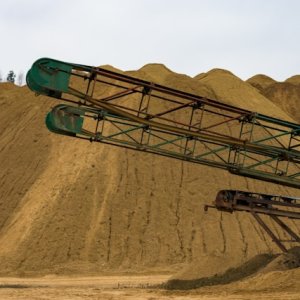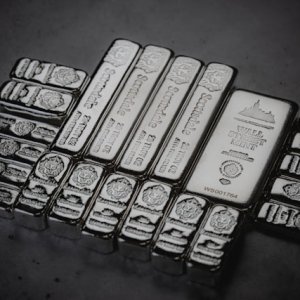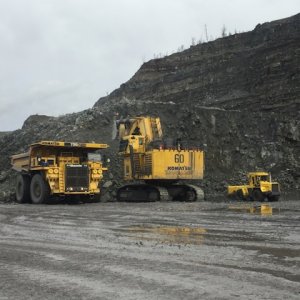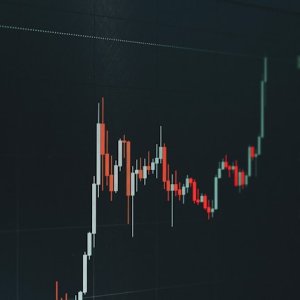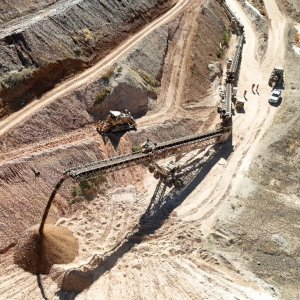
Optimism Despite Global Uncertainty, Local Hurdles
The last year saw considerable change in the rules of the game, proving that anything is possible. Mexico’s closest ally, the US now has a president that announces major trade policies through Twitter, long-standing trade agreements are being renegotiated and the threat of trade wars is real. At a more local level, companies are getting used to a recently-elected president who ran on a nationalistic agenda and made history along the way, marking the first time the president of Mexico has not belonged to the PRI or PAN parties. The context, nationally and internationally, has made geopolitical instability the new norm for the global market and while in the past, volatility meant good news for operators, some fear that investors may hold back as they adapt to the persistent instability.
In times of uncertainty, precious metals are the go-to investment option. According to Morningstar, a Chicago-based investment research firm, “for as long as many can remember, gold has reacted favorably to geopolitical turbulence – as uncertainty increases, the rush to gold as a haven has been the counterbalance.” But 2018 has bucked the trend and now, low unemployment and lower taxes in the US is underpinning the dollar and limiting the need for metals hedging. “In recent times the established paradigm has been challenged,” says Morningstar.
But in spite of the speculation, Deloitte sees consistent demand across precious metals, advantages in rising global debt levels and few other investment options that can compete against the engrained history of the mining industry. “Gold is in fairly stable territory while silver unfortunately is still waiting for its moment to shine,” says Philip Hopwood, Global Mining Leader at the consultancy. “Copper and zinc are enjoying positive momentum mainly because of supply constraints. Many commodities are in a good place thanks to the growing popularity of electric vehicles (EV).”
While still far from their 2011 peak, prices are continuing to improve and operators are finally starting to harvest the fruits of their cost-reduction practices sparked by the bear market of 2015. Mexico continues to be in the Top 10 as one of the biggest producers of silver, gold and copper but authorities must remain aware of the rising attractiveness of mining jurisdictions like Chile and Peru. Added revenues have meant more money to be channeled into exploration, helping operators strengthen their pipelines and offering a strong outlook for the industry in the years to come.
MEXICAN GOLD OUTPUT DECLINES
After falling to nearly US$1,000/oz in 2015, the industry welcomed the rise, albeit slowly, of gold prices. In 2017, the price was on average US$1,257/oz, having traded in a range between a low of US$1,151/oz in January and a peak of US$1,346/oz in September, although these prices are still a far way off the decade peak of US$1,895/oz in 2011. Global gold output in 2017 rose slightly to 104.4 million ounces from 99.7 million in 2016 but Mexico fell to ninth place on the global list of gold producers after being No. 8 for two years in a row thanks to a 4 percent drop in domestic production.
The fall was influenced by production drops in world class gold deposits Los Filos and Limón-Guajes in Guerrero, the latter caused by a five-month blockade. Eight other major mines in the country also reported a decline in production in comparison to 2016, including San Dimas, Guanacevi and San Francisco. Peñasquito reclaimed its place as the country’s top gold producer from La Herradura with output of 476,000 ounces in 2017, a 2 percent increase from 2016. Sonora state continues to be the jewel in the gold crown as the biggest gold producer in Mexico followed by Zacatecas and Chihuahua, while Guerrero, straddling a prolific gold belt, is attracting new attention with hopes its security issues will be resolved.
New gold projects in the pipeline offer optimism for production in 2018. Fresnillo is taking the lead as its Pyrite Plant fed by the Saucito and Fresnillo mines in Zacatecas is expected to start operating in the second half of 2018. The dynamic lixiviation plant in development in La Herradura is also expected to increase gold production by 36,000oz/y along with the potential of bringing online Juanicipio in 2020 to produce 30,000oz/y.
SILVER ON TOP
In silver production, Mexico maintained a firm grip on its position as top producer in the world for the eighth year in a row despite the 4 percent fall in global silver output. The global decline was caused by losses at major mines in South America, Oceania and Europe but was compensated in large part by greater output in North America. And as silver is often a byproduct of gold and copper production, the 2017 spike in global exploration investment after a four-year retreat could be a positive indicator of even bigger output in the years to come.
Mexico was able to come out on top primarily thanks to Fresnillo’s eagerly-awaited pipeline of projects that are starting to come online. The company expects to complete the expansion of La Ciénega by 2019 and Juanicipio is projected to start producing 10 million ounces of silver per year by 2020. Another Mexican giant, Industrias Peñoles, expects to start producing 4.7 million ounces of silver in its Rey de Plata mine by mid-2019. Additional development projects were put on hold as companies search for bigger reserves and adjust construction plans. Coeur Mining’s La Preciosa mine, SSR’s Pitarrilla mine and El Gallo II owned by McEwen were among those affected.
When it comes to the country’s main silver mines, Peñasquito was not only the main gold producer but also the main silver producing mine in 2017 with an output of 21.5 million ounces. But Fresnillo is still the global silver king as four of its mines were included in the Top 10: Saucito, Fresnillo, San Julián and La Ciénega. Overall, silver output in Mexico totaled 187 million ounces in 2017 at an average global market price of US$17/oz, and ranging between a high of US$18.3/oz in February and a low of US$15.2/oz in July.
THE SWAYS IN COPPER PRICES
While silver and gold were not as drastically shaken by geopolitical events, a possible trade war between China and the US and a strong growth in supply caused copper prices to sway. The volatile climate impacted the metal more as China is responsible for half of the world’s consumption of copper. Copper in 2017 begun to make a comeback after several years of low prices. In December 2017, prices reached heights of US$7,215/t for the first time since 2014. But the good news did not last long. The metal peaked at US$7,261/t in June 2018 and dropped below the US$6,000/t benchmark in mid-July. Analysts from Goldman Sachs speculate that this drop was sparked by concerns over rising tension between China and the US but that the impact will not last long in the case of raw materials like copper. In July, S&P revised its price predictions for copper, lifting them to $6,800/t from $6,600/t for 2019 and to $7,000/t from $6,800/t for 2020.
Global copper production totaled 19.7 million tons, a 2 percent drop from the previous year. Mexico produced 742,246 tons, of which Grupo México’s Buenavista del Cobre alone churned out 318,900 tons in 2017. Chile continues to be the leading producer, followed by Peru and China with Mexico in seventh place. Unsurprisingly, Grupo México registered the biggest copper output in Mexico and took seventh position on a global scale. Sonora contributed 84 percent of the total production but the reactivation of Campo Morado at the end of 2017 and the start of production in Rey de Plata in mid-2019 are expected to greatly increase Guerrero’s copper output, placing it as a possible contender for the 2019 top spot.
ALTERNATIVES IN THE LIMELIGHT
The battery metal boom hit Mexico as companies like Azure Minerals and Bacanora Minerals continue to develop world-class deposits for lithium and cobalt. Demand for renewable technologies are motivating companies to seek new deposits that can satiate the need for battery metals. Benchmark Minerals Intelligence projects a rise in lithium demand to more than 900,000 in 2025, up over 300 percent from about 220,000t/y of lithium-carbonate equivalent in 2017. It says this will continue to grow until demand reaches around 2 million t/y by the early 2030s. Prices swelled to US$16,500/t in 2018 from US$3,870/t in 2011. In the limelight once again, Sonora holds one of the world’s larger lithium resources that benefits from being both high grade and scalable.
Operator Bacanora Lithium plans to start production in 2020 after 10 years of evaluating the project and with several off-takers already signed on even before commercial production. Cobalt has a future that looks just as bright as Global Energy Metals expects demand to rise 30 percent by 2020 in comparison to 2016. Azure Minerals is betting on this growth through its Sara Alicia project, located in Sonora. The company believes that it could be the highest-grade cobalt project in the world. The price of cobalt rose from US$23,861.4/t in 2016 to US$80,490.68/t in 2018, an indicator of the expectations for this metal.
A GAP TO CLOSE IN EXPLORATION INVESTMENT
Exploration is an important indicator of the well-being of the industry and miners are eagerly anticipating a growing pipeline as investment increased for the first time in 2017 after four consecutive years of declines. According to S&P Global Market Intelligence, exploration investment rose to US$8.4 billion in 2017 from US$7.3 billion in 2016, although still far from the US$21.5 billion peak recorded in 2012. The report says the rise was due to improved equity market support for explorers that allowed companies to resume drilling. It expects global exploration budgets to increase a further 15-20 percent year-on-year in 2018. In Latin America, the most popular destinations for exploration investment were Chile, Peru, Mexico, Brazil, Argentina and Colombia. The metal that attracted the most capital was gold followed by base metals such as copper, nickel and zinc.
In Mexico, exploration projects focused on expanding current mines and reserves and reactivating the projects put on hold by juniors when the downturn hit. Until now, there had been a lack of interest in greenfield exploration since 2013 due to the lack of funds available to juniors, cuts in the exploration budget of major players and strategies to explore areas surrounding existing mines.
As exploration is the backbone of the industry, CAMIMEX highlighted its concern over the low capital allocation received by the segment to finance new discoveries in 2017. Despite the context, the country continues to have an exciting pipeline of projects in exploration. Azure Minerals’ Sara Alicia and Sunshine Silver’s Los Gatos silver and zinc deposit both stand out as promising prospects. Among the most important expansion projects in the country is that of La Ciénega owned by Fresnillo in Durango. Hecla is also investing in expanding its San Sebastián mine in Durango to increase production rates by the end of 2018.
DEMAND FOR RULE OF LAW
Loaded with added revenues in their pockets, operators are eager to expand their portfolios. And while Mexico has important projects in the pipeline, the country has several challenges to overcome to allow it to maintain its competitive edge over competing jurisdictions in Latin America. One of the most pressing issues is the need for an established rule of law in the country as several times in 2017 communities caused illegal interruptions to operations, jeopardizing millions of dollars. An example is the five-month blockade in Torex Gold’s El Limón-Guajes that caused the company a net loss of US$12.6 million in 2017 compared to the net income of US$3.2 million it reported in 2016.
Argonaut Gold also suffered a community setback when the explosives permit for its La Colorada project in Sonora was suspended amid a legal challenge by the municipality in April 2018 that the permit should never have been granted. After responding to the challenge, the operation was left in limbo until the end of June, when the permit was reinstated. In the meantime, the operations were able to continue with Argonaut processing stockpiled ore.
Companies are also demanding a stronger rule of law to increase security near mine operations that are often in isolated and remote areas. Pan American Silver’s Dolores mine was forced to halt production due to high insecurity levels and this is especially prevalent in Pacific coastal states like Guerrero and Sinaloa. Pan American Silver managed to overcome the situation quickly due to the deployment of federal and state resources to secure the access roads to the mine.
THE BEST IS YET TO COME
Change is the key word for the industry as volatility permeates not only the geopolitical realm but also the way business is done within the sector. To stay afloat, a traditionally closed industry must adapt to the ebbs and flows of consumer and investor demands, including transparency and low-cost operations that can start production within shorter time frames. The rise of new competitors in the financial market such as cryptocurrencies and fintech that are catching ever-more attention from investors are equally motivating operators to transform. Having learned their lesson from the past downturn, miners are much more cautious about their use of capital and seek strategic projects to add to their portfolios. Technology is also playing a greater role as companies are on the hunt for innovative methods that can positively transform their operations.
National giants, such as Fresnillo and Industrias Peñoles, also continue to grow and succeed both locally and internationally. The market has adopted to the rapid influx of international companies, mostly Canadian, that are taking an interest in the Mexican mining industry. The country advanced in the Fraser Institute’s attractiveness index from 50th place to 44th. But as other jurisdictions also become more attractive – Chile jumped to eighth from 39 in the previous years – Mexico must advance at a faster pace.
Mining is present in every aspect of everyday life, from cars to homes and right down to country’s coin currency. To further promote growth, the sector must continue to create societal awareness of the sector’s role in economic development. Communication among the social, public and private sectors can open doors to capital and facilitate permitting. And with a new administration taking over the reins of government, the mining industry also has an opportunity to secure a prominent place on the federal agenda.

